Peltae with a pointed apex and volute-shaped, turned-in endings mostly appear in Greece on pavements dating from Late Antiquity. (Fig. 7).
On the longer side of a mosaic in Eleusis the peltae feature a pointed middle ending and inward-folding handles (Fig. 8).
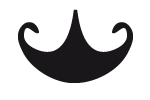 |
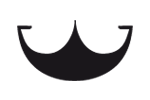 |
Not all pelta endings are pointed. On some pavements they appear slightly thicker or even spread out in a V-shape at the centre. Such variations are mostly found in Kos and may be representative of a Dodecanese workshop (Fig. 9-10).
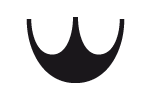 |
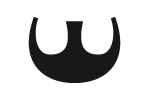 |
In another example from Kos the apex is also stretched out, while the narrow handles turn inwards in a spiral shape (Fig. 11).
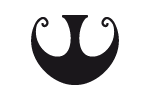 |
Sometimes the expanding apex has a small indentation at the top, giving it the shape of a heart or ivy leaf. On a mosaic in Dion the heart-shaped apex is flanked by two inward-turning, spiral-shaped handles (Fig. 12).
 |
On another pavement from Kos all three handles feature heart-shaped endings. The central “heart” is a little larger than those on either side (Fig. 13).
 |
On a mosaic in Patras that’s unfortunately received insufficient publicity it’s possible that peltae with an apex in the form of a volute were depicted. Additionally, the expanding crown features two outward-turning spirals (Fig. 14).
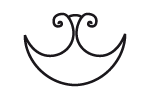 |
The idea also arose to turn the tips of the “ivy leaf” outwards. Such a crowning feature has so far only been identified on a mosaic floor in Eleusis (Fig. 15). Comparable, however, is another pavement whose peltae possess small triangular tips (Fig. 16).
 |
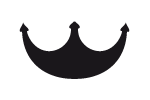 |
On another example the middle ending features a small beam consisting of three tessellae with touching edges (Fig. 17).
 |
In rare cases an apex consisting of three cubes assembled in a V-shape can also be found (Fig. 18).
 |
More frequent is a small cross featuring four cubes. (Fig. 19). Only on a single mosaic, which probably dates from early Christian times, were the tessallae that made up the cross laid out in reticular style (Fig. 20). Otherwise they lie on a line with the parallel rows of small stones in the background and consist of four coloured tessellae in a cross-formation around a single white cube. The apex ornamentation sometimes features differently coloured stones to the rest of the pelta.
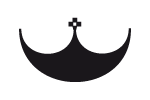 |
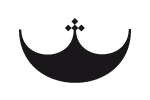 |
On some mosaics the canonical semi-circular form of the peltae was extended, resulting in a round-bellied body with short or long handles (Fig. 21-22).
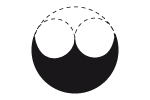 |
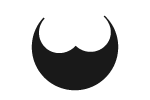 |
Beyond these relatively simple variations on an established motif, more complicated creations can also be found in Greece. Two unusual pelta types could be observed on a mosaic floor in Olympia.
In the somewhat simpler version an expanding apex is flanked by two rounded, inwardly curving handles (mushroom form). Similar peltae forms can be found on a mosaic from Melos (Fig. 23-24).
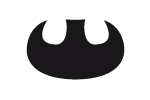 |
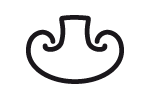 |
The other pelta type is divided into three differently coloured parts. Again here the two outer handles curl inwards and frame a small volute. The apex consists of a triangle with a staircase-like border, and flows into two pointed, outwardly curving leaves (Fig. 25).
 |